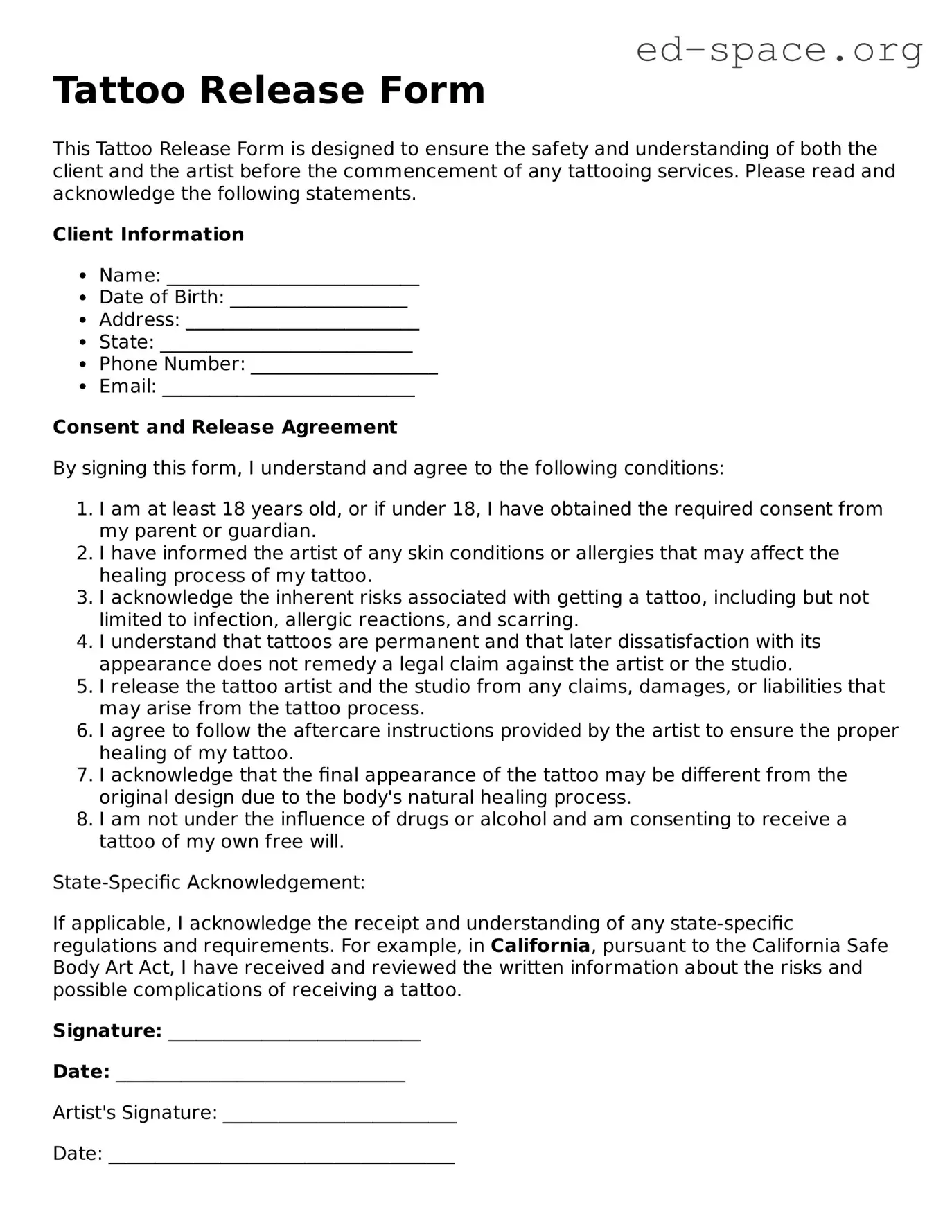What is a Tattoo Release Form?
A Tattoo Release Form is a document that clients sign before getting a tattoo. It outlines the agreement between the client and the tattoo artist or studio. The form typically covers consent to the procedure, acknowledgment of the risks involved, assurance that the client is of legal age, and understanding that the results are permanent. It may also include health and safety disclosures.
Why do I need to sign a Tattoo Release Form?
Signing a Tattoo Release Form protects both the client and the tattoo artist. For the client, it ensures they are informed about the procedure, its permanence, and the potential risks. For the artist and the studio, it helps in managing legal risks by having documented consent and understanding from the client regarding the procedure's outcome and possible health risks.
Is a Tattoo Release Form legally required?
While laws vary by location, many jurisdictions require a signed Tattoo Release Form as part of the health and safety regulations governing tattoo studios. Even where it's not legally mandated, most reputable artists and studios will require one to uphold professional standards and protect all parties involved.
What happens if I refuse to sign the Tattoo Release Form?
If you refuse to sign the Tattoo Release Form, the artist or the studio has the right to refuse service. This policy is in place to ensure that all legal and safety standards are maintained, protecting the artist, the studio, and clients.
Does the Tattoo Release Form cover the aftercare process?
While the primary focus of the Tattoo Release Form is to obtain consent and inform about the tattoo process, many forms also include guidelines for aftercare. This is to ensure that clients are aware of the best practices to follow for healing and to minimize the risk of infection or other issues.
Can I get a tattoo without a parent if I'm under 18 but have a signed Tattoo Release Form?
In most places, individuals under the age of 18 are not legally allowed to get a tattoo, even with a signed Tattoo Release Form from a parent or guardian. However, some jurisdictions may have exceptions. It's important to check the specific legal requirements in your area.
What should I look for in the Tattoo Release Form before signing?
Before signing, thoroughly review the form to ensure it clearly outlines the details of the consent, the risks involved, aftercare instructions, and any health and safety information. Make sure it's from a reputable studio, and don't hesitate to ask questions if anything is unclear.
Can I change my mind after signing the Tattoo Release Form?
Yes, you can change your mind after signing the form, but it's important to communicate this decision before the tattooing process begins. Keep in mind that depending on the studio's policy, you may or may not be entitled to a refund for any deposits or fees paid in advance.
What if I have a medical condition or skin issue; should I inform the tattoo artist before signing the Tattoo Release Form?
Absolutely. It's crucial to inform the tattoo artist of any medical conditions or skin issues before signing the form. This information can affect your suitability for getting a tattoo and may require special considerations or precautions during the tattoo process.
Are digital Tattoo Release Forms as valid as paper forms?
Yes, digital Tattoo Release Forms are considered as valid as paper forms, provided they contain all the necessary information and are signed by the client. Many studios use digital forms as part of their effort to be eco-friendly and to streamline their booking and consent process.
